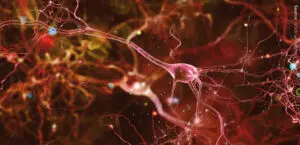About the structure and biological function of GD1
Structure. GD1 ganglioside lipids belong to the group of gangliosides within the sphingolipids. Their structure consists of a ceramide backbone linked to an oligosaccharide unit made of six sugar molecules. Two of them are sialic acid. The ceramide backbone contains two hydrocarbon chains: a long-chain base which is linked to a fatty acid via an amide bond. The fatty acid and the long-chain base can be of variable length, hydroxylated, and contain double bonds.
Function. GD1 gangliosides, at times considered a reserve pool for GM1 lipids, belong to the major gangliosides of the mammal brain. During embryogenesis and the postnatal period the amount of GD1 lipids in the human central nervous system increases up to 15-fold. Further, some GD1 lipids have anti-inflammatory properties by inhibiting the effects of bacterial lipopolysaccharides and preventing cytokine activation. In mice, GD1 gangliosides are important for oocyte maturation and fertilization.


